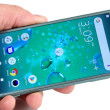Review: Coolpad Conjr
Jan 18, 2017, 10:15 AM by Eric M. Zeman

Coolpad's latest smartphone for the U.S. is the Conjr, a low-cost Android handset that's sold unlocked. The phone boasts a relatively attractive design, but peddles mid-range specs at best. Here is Phonescoop's in-depth review.
Hardware
Is It Your Type?
The Coolpad Conjr is an inexpensive Android handset that marries reasonably good looks with relatively basic specs. The result is a capable device for those on a budget who prefer unlocked phones.
Body
Coolpad hopes you'll judge the Conjr by its cover, not its capabilities. The phone ticks off most of the boxes that define what's popular in phone design these days: curved glass, metal frame, metal body panels, and a classy look. The Conjr works all sorts of magic on the eye of the beholder, but I'm not sure there's as much substance underneath the surface as the Conjr implies.
I'd describe the Conjr as an affordable, premium-looking phone. The 2.5D curved glass fits into a chamfered metal frame with chrome accents. An attractive aluminum panel covers most of the back, and it, too, is framed in chrome that helps define its shape. The black front mixed with dark gray metals and shiny accents give your eyes lots to pay attention to. I wish the overall shape had a bit more personality, but the Conjr could easily fool you into thinking it costs twice as much as it does (at least, from a distance.)
Coolpad could have made the phone a bit smaller. Handsets with 5-inch displays typically enjoy compact footprints. Sadly, the Conjr's 5-inch screen is surrounded by really thick bezels that push the dimensions out more than would seem necessary. The phone isn't huge though, and people who lean toward average-sized devices may find it works well for them. I was able to reach most of the display with my thumb, and had no trouble pushing the phone into my pockets. The curved rear panel really helps, and I appreciate the smooth shape.
The Conjr is assembled from fine materials. I like the feel of the glass front and metal rear panel, in particular. All the components are fitted together tightly. There are no gaps or other odd spaces between the pieces. The Conjr isn't rugged, but it feels strong and inspires confidence. Most people should be pleased with the phone's quality. It won't fool you into believing it's a flagship-class handset, but the Conjr is no cheap-o.
The phone's face is rather plain. Like many devices, black glass covers the entire front panel. Functional elements are visible above and below the display. The only design feature breathing any sort of life into the phone is the chrome accent that circles the glass. The speaker up top is flanked by a user-facing camera and a user-facing flash, which is still somewhat of a rare feature in this class of device. Three capacitive buttons (app switcher, home, back) fill the bottom bezel, each of which is painted on in chrome. The buttons don't offer any sort of physical definition, but they are still easy to find and use thanks to lighted icons and haptic feedback.
The frame is broken up on all four sides by at least one button or port. The volume toggle is on the left edge of the Conjr. It has an excellent profile and very good travel/feedback. You can't miss this button. The same is true of the screen lock button; it's positioned near the middle of the right side. Though it's smaller than the volume toggle, the screen lock button is just as easy to find and use. You'll also find the SIM card tray on the right edge. You'll need a paperclip or other tool to eject it. The tray accommodates either one SIM card and one memory card, or two SIM cards. (This is becoming a common configuration on unlocked phones lately.) A headphone jack is found on the top, while a microUSB port is located on the bottom.
I'm a bit disappointed about the microUSB port. Many phone makers are (finally) adopting the USB-C port in real numbers and there's no reason for any phone in 2017 to have microUSB. USB-C is reversible and easier to use. MicroUSB is beginning to feel like laziness on the part of device manufacturers.

The Conjr's rear panel has a lot going on. First, chrome is everywhere. It runs around the outer edge, across the back, and encircles the camera, fingerprint reader, and even the flash. The chrome accents catch light constantly and pull your eyes in. They're hard to miss.
An aluminum shell forms the majority of the back side. It has a nice matte paint job that I like and a tight curve as it approaches the side edges. Coolpad made use of two plastic end caps at the top and bottom of the rear panel to accommodate the phone's antennas. Though the end caps are gray, it's clear Coolpad didn't attempt to match the color of the aluminum shell. The endcaps have their own color, shading, and texture and I'm fine with that. The camera module is raised a bit and the fingerprint reader is depressed a bit, which makes them easy to tell apart by feel.

The rear cover cannot be removed; neither can the battery.
The Conjr is a respectable piece of hardware from Coolpad. The phone relies on solid materials, is fitted together well, and is easy to use.

Screen
Coolpad gave the Conjr a 5-inch, 720p HD display. It relies on an IPS LCD panel. Screens this size can get away with the 720p resolution and the lower resolution helps keep the cost down. The pixel density is good enough on the Conjr that I didn't see any individual pixels, and on-screen elements are smooth and sharp. Brightness could be a little bit better. The phone delivers more than enough light for indoor use, of course, but it's a bit hard to see outside under a bright, sunny sky unless you crank the brightness all the way up. The light sensor wasn't up to the task, so manually managing the brightness is often necessary. Colors are accurate and viewing angles are very good for an LCD display. It's a fine screen for this class of device.
Signal
Coolpad sells the Conjr unlocked with support for GSM/LTE networks such as those run by AT&T/Cricket and T-Mobile/MetroPCS. LTE support is limited to bands 2, 4, 5, 7, and 12, which gives the Conjr decent compatibility with U.S. networks, but definitely not the best. I tested it on AT&T's network in the New York City area and came away unimpressed. The phone doesn't keep up with today's branded AT&T phones, nor with many other unlocked phones.
The Conjr was able to find AT&T's network everywhere I took it. It connected calls no problem, mostly on the first dial. The phone held onto calls at highways speeds, too, and didn't drop nor miss any.
But I found limitations in data performance. Though the Conjr showed the "4G LTE" signal much of the time, it dipped down to "H" (or 3.5G) more often than other phones I've tested recently. Data speeds were mediocre at best. Media-heavy social networks such as Facebook, Twitter, and Instagram were sometimes a bit sluggish. Streaming media such as Spotify and YouTube over cellular was fraught with stuttering, buffering, and drops. You'll do well to know where WiFi is located if you plan to watch videos.
Sound
The Conjr is pretty good at making phone calls. The earpiece delivers enough volume for use in and around your home or office, as well as noisier spaces such as coffee shops and city streets. You will need to keep the volume set up all the way up most of the time. Call clarity was surprisingly good. Voices in the earpiece were free of distortion and had a warm timbre. People I spoke to through the Conjr said I sounded good.
The speakerphone is rather quiet. Since the speaker is on the back, you'll get the best results by laying the phone down on a hard, flat surface. I found my hand often muffled the speakerphone when holding the phone. Clarity via the speakerphone is decent, but introduces a bit of snap, crackle, and pop from time to time.
Music, ringers, and alerts aren't quite loud enough for my tastes, but the vibrate alert is pretty good.
Battery
The phone contains a 2,500 mAh battery and it will push from breakfast to bedtime... most of the time. As always, I tested the phone with brightness set at 50% and all the radios on. I used the phone heavily and spent lots of time streaming Spotify and watching YouTube (via WiFi). On the majority of days the Conjr made it to 11pm with 10-15% power left, but on several occasions it was bottoming out closer to 10pm. I was hoping for a bit better.
Coolpad installed a really basic battery saver tool. It doesn't have an automatic on/off function so you have to toggle it on manually. All it does, as far as I can tell, is reduce screen brightness and limit notifications. I can't say it does much to improve battery life.
The Conjr doesn't support wireless charging nor rapid charging.
Bluetooth, GPS, NFC, WiFi
The phone's ancillary radios do their job with gusto. I didn't hit any snags pairing and connecting the Conjr to other Bluetooth devices, such as headsets, speakers, and wearables. Voice calls sounded good via dedicated mono headsets, but rather iffy through my car's hands-free system. Music streamed to a speaker sounded decent.
The Conjr's GPS radio worked. Location accuracy was often as good as 10 feet, but averaged closer to 20. The phone pinpointed me in just a few seconds.
The WiFi radio was a life-saver.
The Conjr doesn't have NFC.
Software
Lock Screen
Coolpad did some interesting things to dress up the lock screen experience and it offers a few tools beyond the basics.
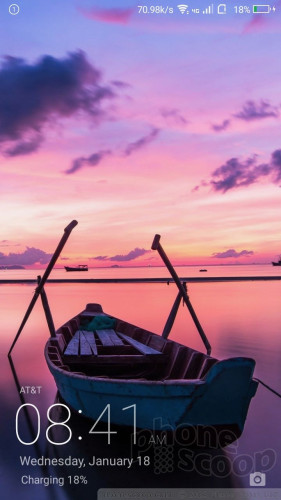
First, you can set up a wide variety of gestures to perform different actions. For example, double-tap to wake the screen or use a quick-slide action to unlock the phone. You can also draw a "C" on the lock screen to open the dialpad, draw an "E" to open the browser, etc. The bummer is that these only work if the phone is unlocked and not protected by a password. Other than the double-tap move, you can wake the screen with a quick press of the lock button.
A large, digital clock floats near the bottom of the lock screen. Notifications will appear above the clock if you want them to. The only shortcut available on the lock screen is for the camera. Swipe from the bottom right corner to start taking pictures. The lock screen allows you to access the notification tray as well as an iOS-style control center that slides up from the bottom.
The Conjr offers several options on the security front. For starters, you can record up to 5 fingerprints to unlock the phone. If you're not into biometrics, you can elect to use the PIN, pattern, or standard password. They all work well. I was pleased with how quickly the fingerprint reader worked.
Home Screen
The Conjr runs Android 6 Marshmallow with the latest version of Coolpad's CoolUI skin. It's a heavy-handed user interface and takes some getting used to. I'm not the biggest fan.
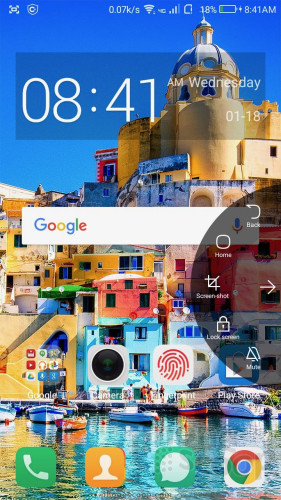
To start, there's no app drawer. All the apps are spilled onto the home screen panels. You can drop apps into folders if you wish to clean things up a bit. CoolUI 8.0 has one cool folder trick: if you open one folder, you can easily see what's in all the other folders by swiping side-to-side. It jumps you from one folder to the next. As always, you can control widgets, wallpapers, screen transitions, and such. Other home screen options let you alter the size of the app grid (4x5, 4x4), choose whether or not the home screens loop, and automatically clean up the home screen app layout.
I really don't like the notification shade. You have to swipe the screen in exactly the right way to get it to open and stay open. If you go too fast or too slow it won't open; the same is true if you swipe too far down the screen or don't swipe enough. It's a serious pain. You can dismiss notifications one at a time or en masse, as well as jump to the notification controls in the system settings if you want.
The control center — which is accessed by swiping up from the bottom of the screen — is a clear rip-off of Apple's control center in iOS. It looks almost identical. The control center includes buttons for the flashlight, calculator, camera, and voice recorder, as well as the brightness tool and Quick Settings toggles. Thankfully you can rearrange the Quick Settings buttons however you wish.
The system settings are unique to CoolUI and it takes some digging to find everything. The tools are broken down into two tabs: system and apps. Most of the items you'll really use are under the system tab.
The Conjr includes a “C Button” feature. Turn this on to add a floating "C" to the screen. The C is transparent and appears on top of all apps. You can move it around and put it anywhere along the left or right sides of the screen. Tapping it opens a circular dashboard for select actions, such as muting the phone, taking screenshots, rebooting the phone or powering it down, and more. It's something we've seen before on other phones. It can be handy for one-handed use on very large phones, but here I find it gets in the way.
Because the phone supports two SIM cards, you can sign into several apps with two different phone numbers. The tool is called dual apps and includes apps that rely on phone number signin, like Facebook and WhatsApp. This only works if you have two active SIM cards in the phone. It's a way for people to manage separate accounts from a single phone.
Last, the fingerprint reader doubles as a "Finger Touch" button when the phone is unlocked. You can choose from a handful of predetermined actions. For example, press the fingerprint sensor to silence alarms, record video, answer a call, or take a selfie. These all require a long press and only work within the confines of the associated app. (A long press won't record video unless the camera app is already running and set to video mode.) Last, you can set the fingerprint sensor to turn off the screen with a quick double tap. These aren't earth-shattering capabilities, but I'd like to see more phone makers take advantage of the fingerprint reader in similar ways.
The Conjr uses a quad-core 1 GHz MediaTek processor. I was really worried that it wouldn't be up to the task of keeping the phone running smoothly. Amazingly, it does fine. The phone never felt slow or sluggish, presumably thanks to its 3GB of RAM. Screen transitions were smooth, apps opened quickly, and everything felt zippy.
Camera
Ready to snap some pix? You can configure the camera app to launch with a quick double-press of the volume down button when the screen is locked. It opens quickly.

The app itself is a total rip-off of Apple's iOS camera app. The similarities are rather ridiculous. The viewfinder fills about 80% of the screen with two black strips holding the controls on either side. The shutter button, effects, and shooting modes are accessed on the right, while the flash, HDR, front camera, and settings are all accessed on the left. I like that both the flash and HDR can be set to on, off, or auto.
The basic shooting modes include photo, video, night, beauty, and pro. You access each of these modes by swiping the entire camera UI up or down. Each works about as you'd expect them to. The beauty mode reduces skin blemishes without making you (or your friends) look too freakish. The pro mode gives you control over contrast, saturation, exposure, ISO, and white balance, but not shutter speed. The night mode turns off the flash and essentially takes longer exposures. Results are mixed, as you have to hold the Conjr very still to get sharp photos.
You can access three other shooting modes (pano, GIF, and sound/shot) by pressing the menu button on the left. The pano mode works pretty well. The dedicated GIF maker can be a lot of fun, but the quality is rather poor thanks to the low resolution. Moreover, it's best if you hold the camera still and shoot a nearby moving subject. GIFs turn out herky-jerky if you move the phone around when capturing. Sound/shot takes a photo and records a few seconds of sound to go with it.
The full settings menu has a standard set of options. One thing I dislike is that the settings interface is locked in portrait orientation. This means you can't change settings as quickly in landscape mode.
If there's any app on the phone that's slightly slow, it's the camera. The app's performance isn't egregiously bad, but it sometimes takes a hair longer to do things than it should.
Photos
The main camera has a 13-megapixel sensor and an aperture of f/2.2. It does well when you're outdoors and there's plenty of light. You can see in the shots below that colors look good, images are sharp, and exposure is generally good. The Conjr tends to slightly overexpose shots if there's a large patch of dark color, like my black car, in the picture. Otherwise most outdoor shots were fairly good.
Indoors, the Conjr is an entirely different story. Pictures are soft, grainy, and basically a mess. Look at the cuckoo clock below. I used the normal photo mode, the flash, and the night mode and none of the photos look even halfway decent. The Conjr needs a lot of light. The flash might help illuminate your friends' faces in a dark bar, but that'll be it. The phone's camera simply can't handle the dark.
The selfie cam has an 8-megapixel sensor with its own LED flash. The good news is most selfies are relatively sharp. Exposure is white balance are all over the place, though. With a solid light source, your cheery face will look just fine. I noticed a lot of grain in the background, however, and the Conjr tended to lean toward the yellow end of the spectrum.
The Conjr can shoot video up to 1080p HD and it looks pretty good. I was pleased with focus, exposure, and white balance, which all appeared decent in the videos I shot.
You can get away with using the Conjr for everyday photos, but I wouldn't rely on it for important stuff.
Wrap-Up

The Coolpad Conjr is a decent, if imperfect, smartphone. The device is assembled from a fine selection of materials and has just enough visual flair to help it stand out from many of today's me-too Android slabs. The metal-and-glass design gives the phone an almost premium appearance and should appeal to those who are tired of cheap, plastic handsets.
The phone manages to cover the basics in mostly good form: the screen looks nice; the Conjr connects calls easily and calls sound very good; and the battery provides enough juice to push through a day's use. I wish data speeds were a bit more consistent on AT&T's network.
I'd call the CoolUI 8.0 skin a bit overwrought. It relies on the Android 6 Marshmallow basics, but uses Coolpad's fonts, icons, and other design elements. Some people may dislike that lack of an app drawer, but the home screen panels are still flexible when it comes to customization. Thankfully the phone runs smoothly despite the entry-level processor. The camera UI works well enough, but photos are inconsistent enough that I would not recommend the Conjr to people who want the best in imaging.
More than anything else, I think the Conjr's price tag is what's holding it back. The phone sells for $180, which is fair but not necessarily competitive. Big brands such as LG and Samsung have plenty of fine options in the sub-$200 space, and if you're willing to explore others such as Blu or ZTE there are plenty of bargains out there.
The only real selling point for the Conjr is that it's available unlocked and supports two SIM cards. Yet even that probably is not enough to convince the prepaid crowd to ditch the the affordable options at store shelves at Cricket and Metro. I'm having a hard time seeing how the Conjr is going to conjure up sales.
Comments
No messages


















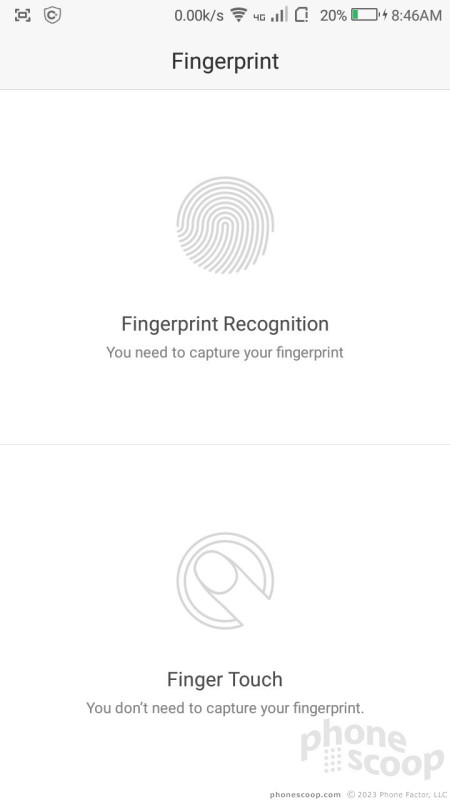



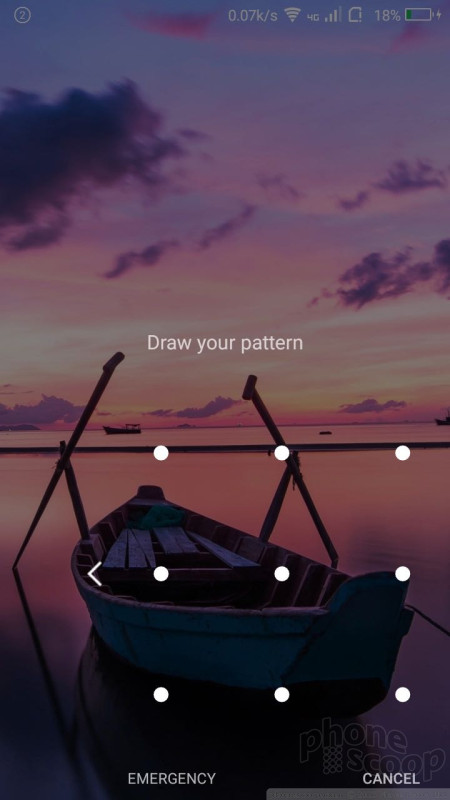













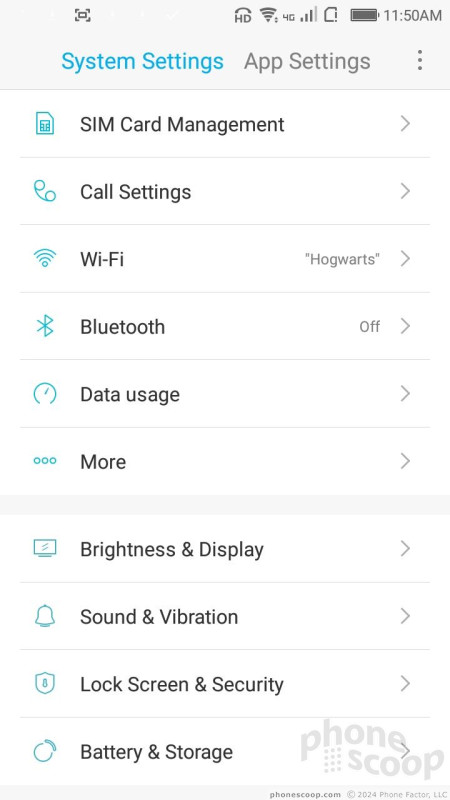










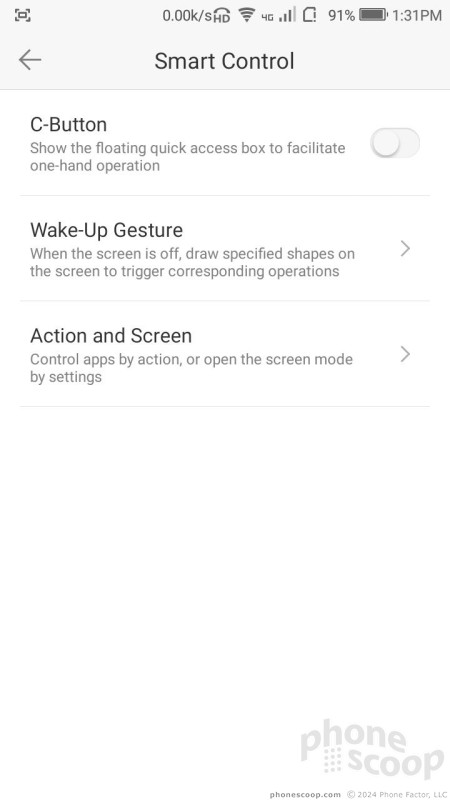




























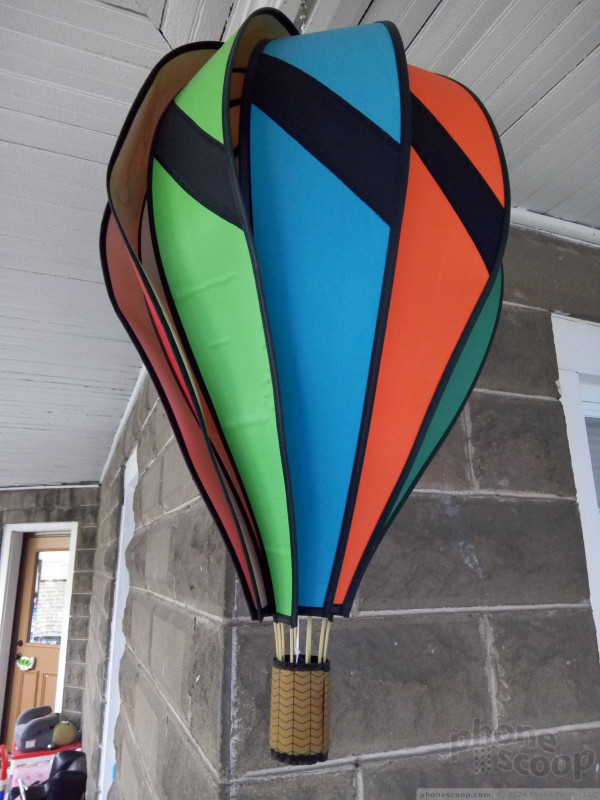









 Hands On with the Coolpad Conjr
Hands On with the Coolpad Conjr
 Qualcomm Taps Iridium for Satellite Connectivity
Qualcomm Taps Iridium for Satellite Connectivity
 Asus Goes Big with Zenfone 11 Ultra
Asus Goes Big with Zenfone 11 Ultra
 Samsung Puts its Best Camera Yet in the Galaxy S23 Ultra
Samsung Puts its Best Camera Yet in the Galaxy S23 Ultra
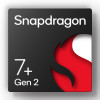 Qualcomm Reveals Most Powerful 7-Series Snapdragon Yet
Qualcomm Reveals Most Powerful 7-Series Snapdragon Yet
 Coolpad Conjr
Coolpad Conjr


